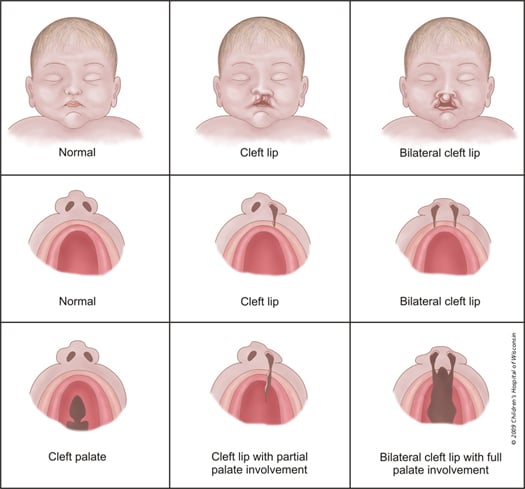Clefting of the lip is a relatively common facial anomaly. It occurs in approximately one in every 700 live births. Most cases (80% ) occur in males.
There is a wide variation in occurrence in different racial and ethnic groups. The African-American population has a lower incidence (one per 2,300), and the Japanese and Native Americans have an increased incidence (one per 580 and one per 280 respectively).
In 80%of cases, only one side of the face is affected. Twice as many of one-sided clefts occur on the left side than on the right side.
A cleft lip can occur alone or together with a cleft palate. The palate is the roof of the mouth. A cleft palate with or without a cleft lip occurs in approximately one per 2,500 births. An isolated cleft palate (meaning the cleft palate occurs without a cleft lip) is more common in females than males. It is also more frequently associated with other anomalies.





